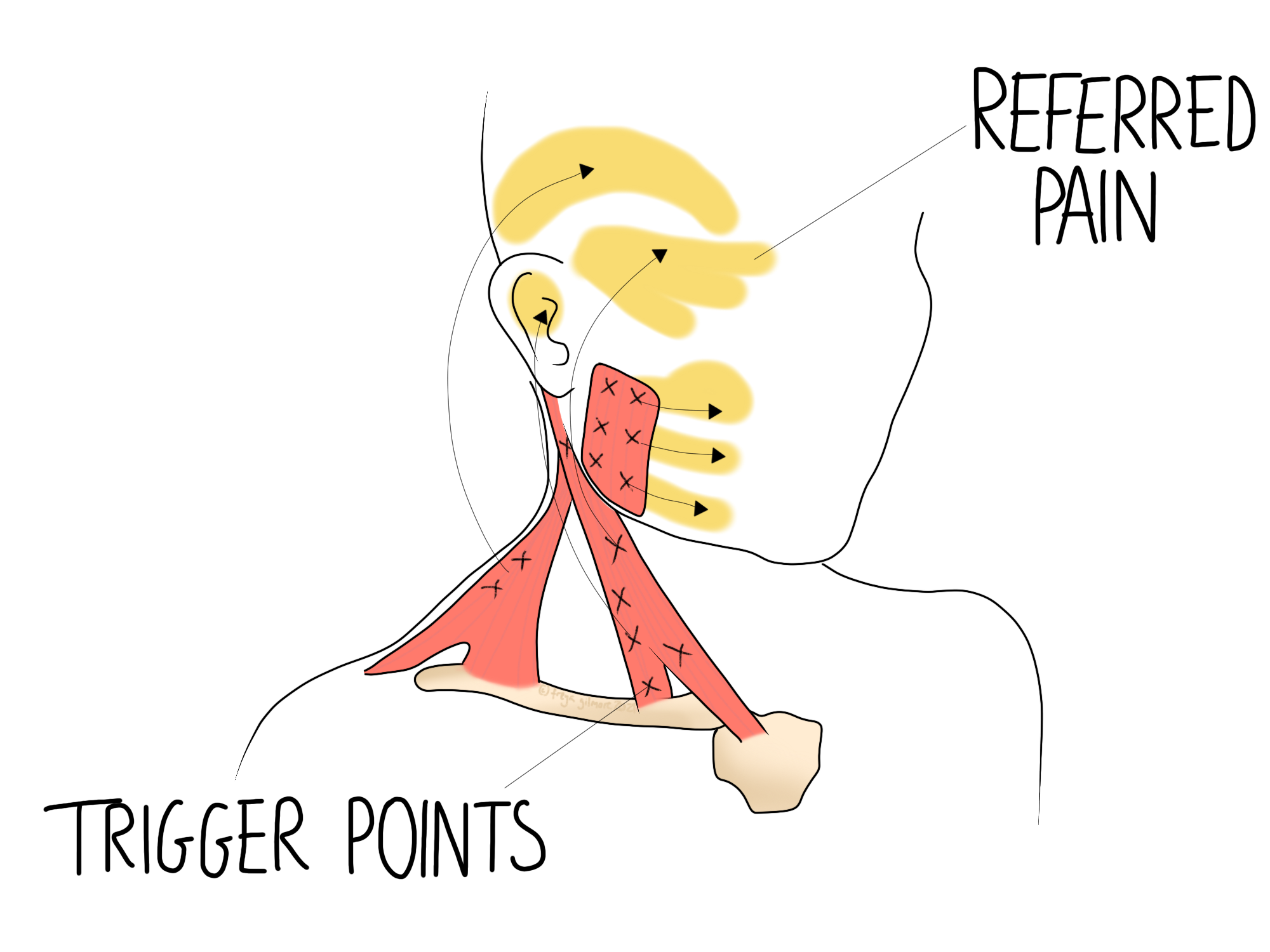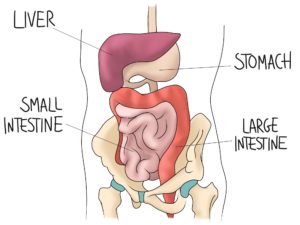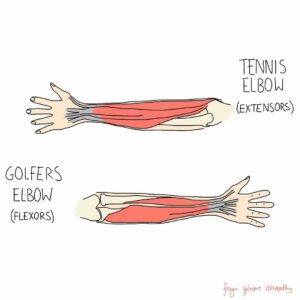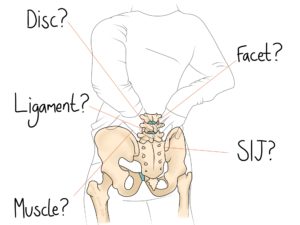Trigger points are areas within a knot of muscle that can be sensitive or cause pain elsewhere in the body.
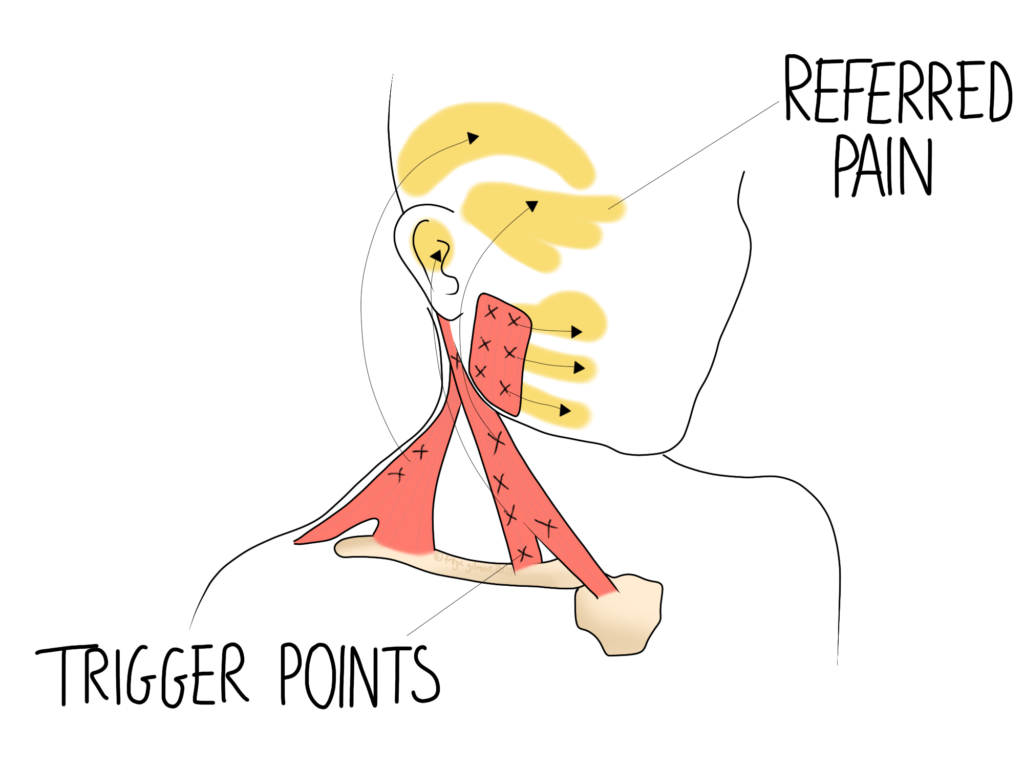
The Basics of Trigger Points
Trigger points are relatively poorly understood, but there are some patterns that stand out when we look into them. When a muscle becomes “knotted”, that’s the feeling of some of the fibres contracting excessively. In some cases, the area affected by the knot develops a trigger point (TrP). This might just be a particularly sore spot, or it might cause other symptoms. An “active” TrP can refer pain and other sensations elsewhere. Like we know that your symptoms will run down the back of your thigh if your sciatic nerve is irritated, there are patterns for active TrPs too. The diagram above shows some referral patterns for points in the neck and jaw. Everyone is wired slightly differently, but we expect a similar kind of pattern for everyone.
Anyone can develop one or more trigger points, although some people seem to be more predisposed to them. The reasons for this are not particularly clear, but we know that pain is amplified by some nutritional insufficiencies. Vitamin D, B, and iron deficiencies may play a role. There are also similarities with conditions like ME and fibromyalgia- conditions characterised by widespread chronic pain and sensitivity.
Chronic Pain
These points can persist for a very long time. Pain that lasts over three months is considered chronic, and the longer it goes on, the more sensitive the nervous system can become. This makes the cycle harder to break. It can also make diagnosis harder, as the picture becomes more complicated and less clear. As with most things, the quicker you can start to address it, the better outcome we expect. Finding the cause after months of symptoms still doesn’t mean that there won’t be a solution, it might just take longer to resolve or start to creep back.
Misdiagnosis
The diagram above shows how a trigger point in the masseter muscle (used for chewing) can cause symptoms into the rest of the jaw, or even the teeth. It makes sense that if you have toothache, you need to see a dentist, but what would you do if they couldn’t find the cause and the X-rays were clear? The same can happen elsewhere, but it might not be as simple to rule out local causes of pain as it is with a tooth.
A muscle in the buttock refers its trigger points down the leg in a similar pattern to the sciatic nerve. Sciatica can be slow to respond to treatment, but if there is little to no change we need to reconsider. Treating the back won’t help the buttock trigger point, but pressing into the knot might bring on all of the usual symptoms, indicating that the muscle is the real cause. Your osteopath will work with you to get to the root of your pain and treat it to the best of their ability. A big part of your diagnosis comes from the information we collect from you in the case history. If you find that you can press into a knot and all of your symptoms appear, let us know- it might be a trigger point.
Book here to see what we can do about your pain.

